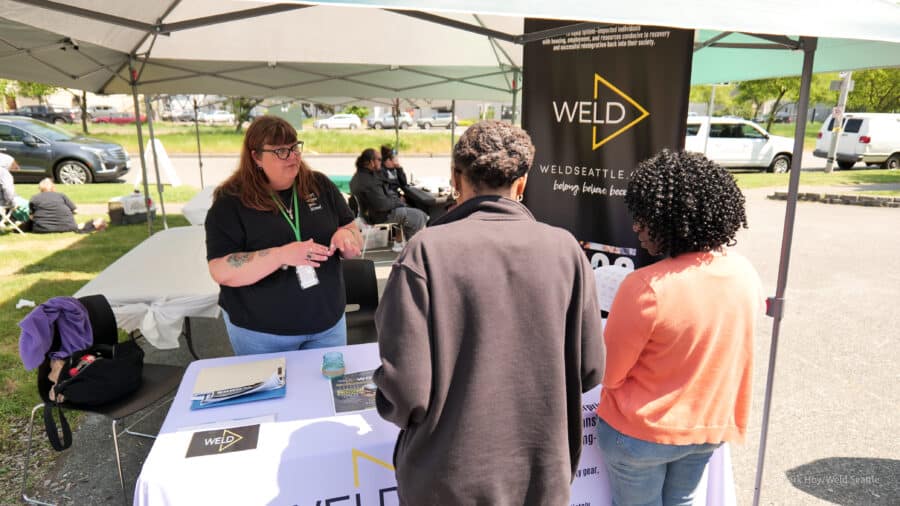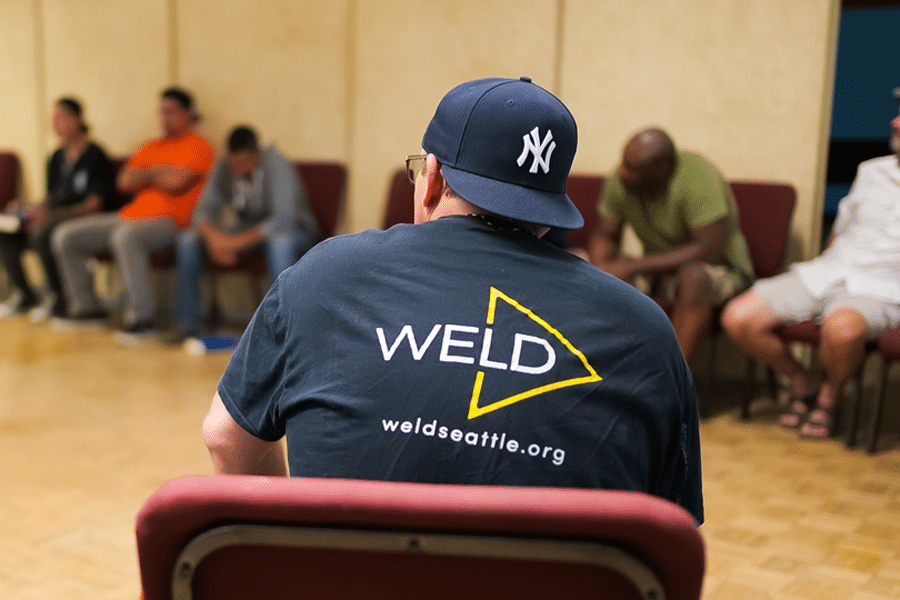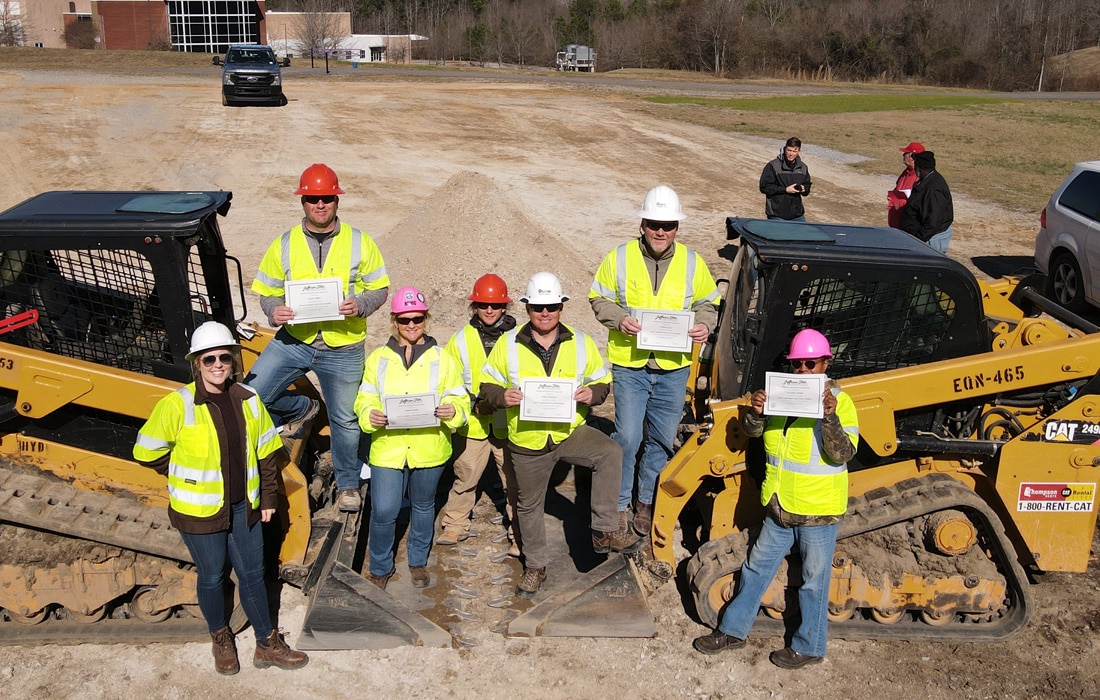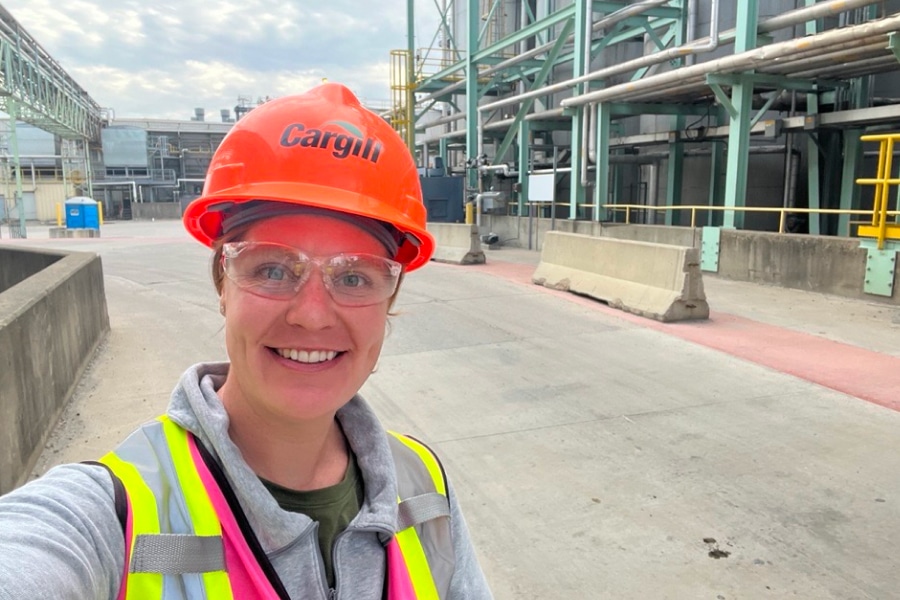When Amy King opened Square Peg Development in Seattle with her husband Brady, she planned to hire former felons, but quickly realized they needed far more than a job.
Access to affordable and stable housing was almost impossible to find, especially in high-priced Seattle. And their complex needs—from substance abuse recovery to court system navigation—were many.
In response, the Kings founded Weld Seattle in 2016. With an innovative model that wraps housing, construction trades job training and a community around formerly incarcerated individuals, the Seattle nonprofit is providing once-imprisoned individuals with a second chance and building up a skilled workforce at the same time.
Today, Weld Seattle’s programs and efforts are guided by people who bring the lived experience of those it serves, and that plays a big role in its success. They include Patrick Arney, Weld’s executive director. Now 10 years sober, Arney had been homeless and incarcerated when he re-entered the community and eventually found his way to Square Peg and Weld.
“Being a steward of this work that we’re doing is the greatest honor,” said Arney, who recently won a Champion of Justice Award from U.S. Rep. Adam Smith. “The accolades are cool. But, at the end of the day, what matters most to me is the individual walking through our door.”
Opening Doors to Housing
When Weld launched, the first plan of attack was to find housing, and leaders reached out to a community grappling with a system they were familiar with—local developers.
Seattle’s permitting process can be lengthy, and buildings can remain vacant for months or years before final approvals are made. King asked developers who were awaiting permits for redevelopment projects of empty houses and residential buildings if they were willing to loan their buildings for Weld Seattle housing until permits were acquired.
“We would go to developers and say, ‘Hey, instead of boarding up that house and allowing it to become a magnet for unsavory behavior, you can donate it to us, get a fair market write off, get a property tax exemption and we’re going to turn it into clean, safe sober living for individuals reentering the community,” Arney said.
Developers took them up on the offer. Today, Weld houses between 80 and 100 people at any given time in buildings loaned by local developers, said Erica Wiley, Weld’s director of development. Residents must be clean and sober while living in the housing.
Bridging the gap from prison to employment
The temporary housing was a first big step, but the men and women needed more to sustain long-term success, Arney said. From his own experience, the biggest barrier to landing permanent housing is employment.
But becoming an immediately reliable full-time employee isn’t easy for the recently incarcerated. Some 60% of individuals once in prison are jobless from the day they were released to four years after their release, according to a U.S. Chamber of Commerce report.
People reentering the community might need to frequently take time off for court commitments or substance abuse rehab, Arney said. And many don’t bring the hard and soft skills required to be successful on the job.

“I knew how difficult it was to work a full-time job also when you have commitments to courts … but you still need to pay rent,” Arney said.
The nonprofit connects the men and women it serves with entry-level work in construction, along with recycling and waste management, so they can start earning an income of their own.
The program also includes mentorship and peer support. Participants take part in job training, coaching and computer literacy classes. They’re provided the tools, personal protective equipment and transportation they need to do the work. They receive certifications and learn those soft and hard skills required to be successful.
Weld has contracts with more than 75 different employment agencies, providing blue-collar workers in a city that desperately needs them amid a labor shortage.
“We act as a kind of intermediary between the private sector and a willing and able workforce that needs access to opportunities and resources for successful outcomes,” Arney said.
Community of support
As they work toward a better life, the community of support that Weld builds around its participants is critical, Arney said. Mentors and peers who have emerged from incarceration to create successful lives understand the importance of just having a cup of coffee and listening to those just beginning their own journey.
“Being able to come to someplace and sit down with somebody that speaks the language, understands the language, understands exactly what they’ve been through and to see somebody on the other side of the [journey] that they are on is really meaningful and impactful,” Arney said. “We don’t know what’s possible, so we need to [see] someone that made it possible for themselves.”
Those connections through Weld Seattle help activate its successes.
About three-quarters of formerly incarcerated people are rearrested within five years of their release, according to a U.S. Department of Justice report. The recidivism rate of Weld participants is 3%.
The nonprofit has provided 100,000 nights of shelter to people who might have had nowhere else to turn. Some 62% of participants have moved on to permanent employment.
And 60% of its participants are Black, indigenous or people of color, helping to bring more diversity to the industry’s mostly white workforce, according to the U.S. Bureau of Labor Statistics.
Construction has long been one of the few industries willing to take a chance on the formerly incarcerated. But to support and retain them for the long term requires big and little steps, Arney said.
Employers can, for example, adjust paid time off policies to reflect the different needs of their employees and allow them time off for a court appearance or therapy appointment. Being mindful of workers in substance abuse recovery by not offering alcohol at a holiday party is another way to support them.
And those adjustments are worth the effort if you want to attract and retain a dedicated workforce of people with the desire and ability to succeed. After all, they’ve already been through so much, persevering through some of the worst circumstances imaginable, Arney said. “The level of loyalty and work that you can get out of individuals that are invested in … is so profound.”













